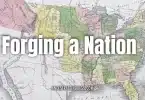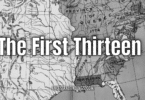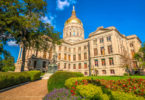The state capital of Missouri is Jefferson City. It is officially known as the City of Jefferson, and some people, particularly locals, refer to it informally as Jeff City. It has a population of about 43,000 people and is the fifteenth most populous city in the state. Additionally, it is the county seat of Cole County and is the primary city in the Jefferson City Metropolitan area. This metropolitan area is the second most populous one in the state and the fifth largest one in the state. Most of Jefferson City is within the boundaries of Cole County, though there is a small part of it that enters into Callaway County. The city is named after Thomas Jefferson, one of the nation’s Founding Fathers and the third president of the United States.
Located at the northern edge of the Ozark Plateau, and on the south of the Mississippi River, the area in which Jefferson City sits is known as Mid-Missouri. It is on the western edge of the Missouri Rhineland, which is one of the top regions for winemaking in the American Midwest. The entire city is based around the domed Capitol building, which can be seen virtually everywhere in the city limits. The Capitol building sits on a bluff that overlooks the Missouri River on the northern side. In fact, the location of the Capitol building is historically important, because Lewis and Clark passed by there on their expedition. This was before anyone of European descent had settled there.
Jefferson City is the home of Lincoln University, which is a public university that has had a predominantly Black student population for most of its existence. The university was founded in 1866 by the 62nd Regiment of US Colored Troops from the Civil War, with assistance and support from the 65th Regiment of US Colored Troops. Besides the university, the major employers in Jefferson City are in the manufacturing and service industries.
During the period before European exploration and settlement, the area where Jefferson City is now located was inhabited by an ancient Native American people known to history only as the Mound Builders. Later, the Osage Native American tribe replaced the Mound Builders in the Jefferson City area. European settlers began to set up residences in the area in the late 1600s, but these were mostly French traders such as Jacques Marquette, Antoine de la Mothe Cadillac, Robert de LaSalle, and Louis Jolliet. On the English descent side was the famous frontiersman Daniel Boone. In fact, Daniel Boone had the greatest influence on the development of the region by those of European descent. This is because his son, Daniel Morgan Boone, was the one who laid out the design of Jefferson City in the early 1800s.
The Missouri Territory was set up in 1812, and St. Louis was the initial seat of government. Later, the capital was moved to St. Charles. In 1821, Jefferson City was selected as the new capital. It was named Lohman’s Landing at the time. When the state legislature decided to move the capital there, they considered changing the name of the town to Missouriopolis. The name Jefferson won out because the members of the legislature wanted to honor Thomas Jefferson. Initially, it was just called Jefferson, but it began being called Jefferson City over the years by locals. The name became so associated with the city that it was eventually made the official name of the place.
At the beginning of its designation as the state capital, Jefferson City was basically just a wilderness trading post located halfway between St. Louis and Kansas City. It was incorporated as a city in 1825, and the state legislature met there for the first time the following year.
In addition to being the state capital, Jefferson City was also selected to be the location of one of the state prisons. This one was named the Missouri State Penitentiary, and opened in 1836. Many famous people have spent time as inmates there, including bank robber Pretty Boy Floyd, heavyweight champion Sonny Liston, and assassin James Earl Ray.
The city was occupied by Union troops during the Civil War. The state legislature was evicted from the city by Union General Nathanial Lyon. Some of the people in the legislature got together in the town of Neosho, and it was there that they passed the official ordinance of secession for Missouri. Yet, Missouri was claimed by both the Confederacy and the Union, along with the state of Kentucky. The people of Missouri were not in agreement on whether they wanted to stay with the Union or leave it. Some cities, particularly St. Louis, were strongly pro-Union. Smaller cities were pro-Confederacy, especially the towns along the Missouri River located between Jefferson City and Kansas City.
German immigrants moved into Jefferson City after the Civil War and build vineyards in the small towns on both sides of the Missouri River. Many of them are located near Jefferson City, and they have become an important part of the agricultural and tourist economy of Missouri.
Today, the economy of Jefferson City is based largely on the industries of government, manufacturing, retail, health care, education, and tourism. Its gross metropolitan product is currently about $7.3 billion, while the total gross domestic product of Missouri is about $260 billion. Jefferson City’s economy accounts for about 2.8% of the total gross state product of Missouri.
Companies such as Central Bancompany, Capital Regional Medical Center, Hawthorn Bancshares, and Arris Pizza all have their international headquarters located in Jefferson City. Another important company located there is Central Dairy, which makes products that are shipped across the state.
Jefferson City won a 2013 essay contest by Rand McNally, in which it was named the Most Beautiful Small Town in America. It was ranked as the fifth Best Small City to Start a Business in 2017. Despite its humble beginnings, Jefferson City is an important and desirable city in which to live and work today.







